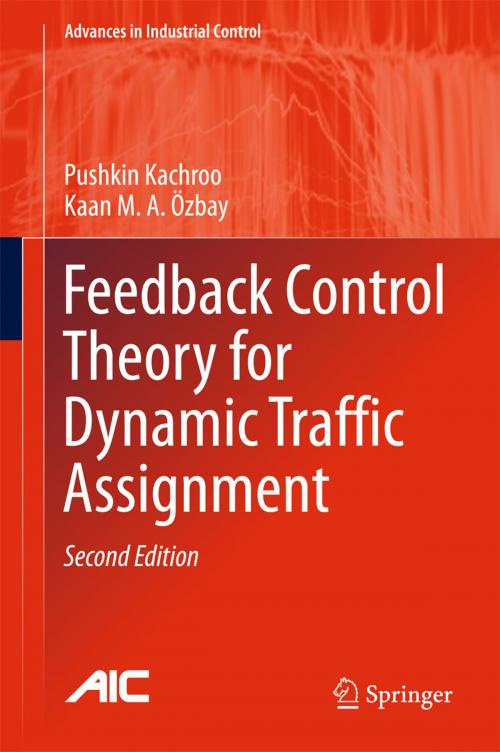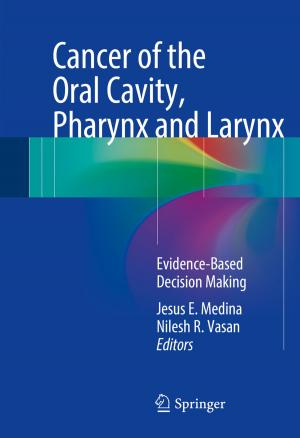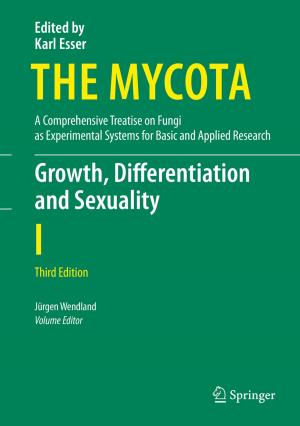Feedback Control Theory for Dynamic Traffic Assignment
Nonfiction, Science & Nature, Technology, Automation, Social & Cultural Studies, Political Science, Politics, City Planning & Urban Development| Author: | Pushkin Kachroo, Kaan M.A. Özbay | ISBN: | 9783319692319 |
| Publisher: | Springer International Publishing | Publication: | May 16, 2018 |
| Imprint: | Springer | Language: | English |
| Author: | Pushkin Kachroo, Kaan M.A. Özbay |
| ISBN: | 9783319692319 |
| Publisher: | Springer International Publishing |
| Publication: | May 16, 2018 |
| Imprint: | Springer |
| Language: | English |
This book develops a methodology for designing feedback control laws for dynamic traffic assignment (DTA) exploiting the introduction of new sensing and information-dissemination technologies to facilitate the introduction of real-time traffic management in intelligent transportation systems. Three methods of modeling the traffic system are discussed:
- partial differential equations representing a distributed-parameter setting;
- continuous-time ordinary differential equations (ODEs) representing a continuous-time lumped-parameter setting; and
- discreet-time ODEs representing a discrete-time lumped-parameter setting.
Feedback control formulations for reaching road-user-equilibrium are presented for each setting and advantages and disadvantage of using each are addressed. The closed-loop methods described are proposed expressly to avoid the counter-productive shifting of bottlenecks from one route to another because of driver over-reaction to routing information.
The second edition of Feedback Control Theory for Dynamic Traffic Assignment has been thoroughly updated with completely new chapters:
- a review of the DTA problem and emphasizing real-time-feedback-based problems;
- an up-to-date presentation of pertinent traffic-flow theory; and
- a treatment of the mathematical solution to the traffic dynamics.
Techinques accounting for the importance of entropy are further new inclusions at various points in the text.
Researchers working in traffic control will find the theoretical material presented a sound basis for further research; the continual reference to applications will help professionals working in highway administration and engineering with the increasingly important task of maintaining and smoothing traffic flow; the extensive use of end-of-chapter exercises will help the graduate student and those new to the field to extend their knowledge.
This book develops a methodology for designing feedback control laws for dynamic traffic assignment (DTA) exploiting the introduction of new sensing and information-dissemination technologies to facilitate the introduction of real-time traffic management in intelligent transportation systems. Three methods of modeling the traffic system are discussed:
- partial differential equations representing a distributed-parameter setting;
- continuous-time ordinary differential equations (ODEs) representing a continuous-time lumped-parameter setting; and
- discreet-time ODEs representing a discrete-time lumped-parameter setting.
Feedback control formulations for reaching road-user-equilibrium are presented for each setting and advantages and disadvantage of using each are addressed. The closed-loop methods described are proposed expressly to avoid the counter-productive shifting of bottlenecks from one route to another because of driver over-reaction to routing information.
The second edition of Feedback Control Theory for Dynamic Traffic Assignment has been thoroughly updated with completely new chapters:
- a review of the DTA problem and emphasizing real-time-feedback-based problems;
- an up-to-date presentation of pertinent traffic-flow theory; and
- a treatment of the mathematical solution to the traffic dynamics.
Techinques accounting for the importance of entropy are further new inclusions at various points in the text.
Researchers working in traffic control will find the theoretical material presented a sound basis for further research; the continual reference to applications will help professionals working in highway administration and engineering with the increasingly important task of maintaining and smoothing traffic flow; the extensive use of end-of-chapter exercises will help the graduate student and those new to the field to extend their knowledge.















